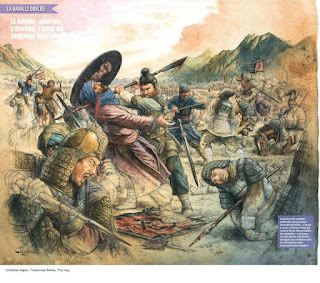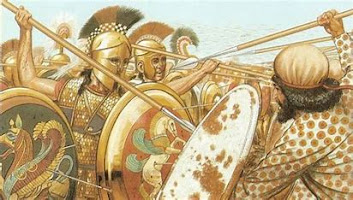The Persian Empire
Introduction
The Persian Empire, also known as the Achaemenid Empire, was one of the most significant empires in ancient history. It was founded by Cyrus the Great in 550 BCE and lasted until the conquests of Alexander the Great in 330 BCE. At its height, the Persian Empire spanned three continents and was the largest empire in the world up to that point. This article will explore the history, culture, society, and achievements of the Persian Empire.
History
The Persian Empire was founded by Cyrus the Great, who united the tribes of Persia and conquered neighboring territories. He overthrew the Median Empire and expanded his kingdom to include the regions of Anatolia, the Levant, and parts of Central Asia. Cyrus was a skilled strategist and ruler who established a system of governance that allowed for a diverse range of peoples and cultures to coexist within the empire.
Cyrus was succeeded by his son, Cambyses II, who continued to expand the empire's borders. He conquered Egypt, which became a vital part of the Persian Empire's economy and a source of wealth and power.
The Persian Empire continued to thrive under the reign of Darius I, who ruled from 522 BCE to 486 BCE. He consolidated the empire's power and established a highly centralized system of governance. Darius divided the empire into provinces, each governed by a satrap who was responsible for collecting taxes and enforcing the law. He also created a standardized system of weights and measures and a common currency, which facilitated trade and commerce throughout the empire.
Under Darius, the Persian Empire reached its height. He expanded the empire's borders to include parts of India and Europe, and his reign was characterized by peace and prosperity. Darius was also a patron of the arts and architecture, and he commissioned many impressive works throughout the empire, including the construction of the royal palace at Susa and the palace complex at Persepolis.
Culture and Society
The Persian Empire was a diverse society, with many different languages, religions, and cultures represented. The official language of the empire was Old Persian, which was written in cuneiform script. However, Aramaic was also widely used as a lingua franca, and many other languages, including Greek and Hebrew, were spoken in different parts of the empire.
The Persian Empire was characterized by religious tolerance. While Zoroastrianism was the official religion of the empire, other religions were allowed to exist and practice freely. This tolerance extended to the Jewish people, who were allowed to return to their homeland and rebuild their temple in Jerusalem.
The Persians were known for their artistic and cultural achievements. They developed a distinctive style of art that was characterized by intricate patterns, bright colors, and symbolic imagery. Persian art was expressed in a variety of media, including pottery, metalwork, and textiles. Persian literature also flourished during this period, with poets such as Ferdowsi and Rumi composing works that are still revered today.
Achievements
The Persian Empire made many significant achievements in the fields of science, technology, and philosophy. The Persians were skilled astronomers and mathematicians, and they developed a sophisticated system of irrigation that allowed for agriculture to flourish in arid regions.
The Persian Empire was also known for its impressive engineering feats. The royal palace at Persepolis, for example, was constructed using advanced techniques that allowed for the creation of massive stone structures without the use of mortar. The Persians also developed sophisticated road networks and transportation systems that facilitated trade and commerce throughout the empire.
Persian philosophy was also highly influential in ancient times. The philosopher Zarathustra, also known as Zoroaster, developed a dualistic worldview that emphasized the struggle between good and evil. This philosophy influenced the development of other religions, including Judaism, Christianitanity etc.
The Persian philosophical tradition is closely tied to the ancient Persian religion of Zoroastrianism, which was the dominant religion of the Persian Empire.
The Persian philosopher Zarathustra, also known as Zoroaster, is the founder of Zoroastrianism and the most significant figure in Persian philosophy. Zarathustra lived in the 6th century BCE and is credited with developing a dualistic worldview that emphasized the struggle between good and evil.
Zarathustra's philosophy was based on the concept of Ahura Mazda, the supreme deity in Zoroastrianism. Ahura Mazda was believed to be the creator of the universe and the source of all goodness and truth. Opposing Ahura Mazda was Angra Mainyu, the embodiment of evil and falsehood.
Zarathustra's philosophy emphasized the importance of moral choice and responsibility. He believed that individuals had the power to choose between good and evil and that their choices would determine their destiny after death.
Zarathustra's philosophy also included a strong ethical component. He believed that individuals should strive to live a life of truth and righteousness and that they should treat others with kindness and respect. He also emphasized the importance of charity and good deeds.
Zarathustra's philosophy had a significant impact on the development of other religious and philosophical traditions. The concept of dualism, which is central to Zoroastrianism, is found in many other religions, including Judaism, Christianity, and Islam. Zarathustra's emphasis on moral responsibility and ethical behavior is also a common theme in many philosophical traditions.
In addition to Zarathustra, other Persian philosophers have made significant contributions to the field of philosophy. The philosopher Avicenna, also known as Ibn Sina, lived in the 10th century CE and was one of the most influential philosophers of the Islamic Golden Age. Avicenna's philosophy was heavily influenced by Aristotle, and he made significant contributions to the fields of metaphysics, ethics, and logic.
Another important Persian philosopher is Mulla Sadra, who lived in the 17th century CE. Mulla Sadra's philosophy emphasized the concept of existence and the unity of all beings. He believed that all things in the universe were interconnected and that the true nature of reality could only be understood through direct experience.
In conclusion, Persian philosophy is a rich and diverse tradition that has made significant contributions to the fields of ethics, metaphysics, and logic. The philosophy of Zarathustra, with its emphasis on moral responsibility and the struggle between good and evil, has had a lasting impact on the development of other religious and philosophical traditions. Other Persian philosophers, including Avicenna and Mulla Sadra, have also made significant contributions to the field of philosophy and continue to influence modern thought.
Conclusion
In conclusion, the Persian Empire was one of the most influential empires in world history. With a long and complex history that spanned over a millennium, the Persian Empire left an indelible mark on the world through its military conquests, cultural achievements, and political innovations. The Persian Empire was renowned for its tolerance, cultural diversity, and advancements in science, art, and philosophy. Despite its eventual decline and fall, the Persian Empire's legacy continues to shape the modern world, and its achievements and contributions to human civilization will be remembered for centuries to come.





